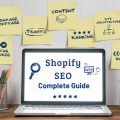Consider this: you spent months optimising your website, creating original content, and scrambling up the Google rankings. But then comes the shock: no traffic like before.
Does that sound familiar at all?
You’re in excellent company. Just last year, over 65% of global Google search results had no click, and if using a smartphone, even more than 75%.
During times like these, nearly everyone gets what they want without visiting a website.
Don’t panic. To cheer you up a bit, I’ll tell you something that may even surprise you: this isn’t always bad news. It is different news, that is all. And smart Australian businesses have already begun to find opportunities in this.
What Are Zero-Click Searches Really About?
Searches that yield no clicks in the search results are known as zero-click searches. Such information is available for searchers without requiring them to visit a website. The search engine results page (SERP) is where they can do it.
These searches vary:
- Position zero (when the top of the search results is an answer box) – Information boxes at right (so-called knowledge panels).
- Business searches – local map packs.
- People Also Ask boxes.
- Direct answer boxes – AI Overviews (a recent asset in the pool of Google).
You’re wondering now, “I like it, so now Google will steal all my traffic? But that’s not quite right. The fact is that the rules of the game have changed, and those enterprises which can quickly adapt are those that are going to do well.
Featured Snippets: Your New Best Friend
Let’s talk about featured snippets specifically, because these little beauties are where the real opportunity lies. Featured snippets (aka position zero) are concise, content-rich boxes that answer a query right on the SERP. They appear above all the regular search results, which means they get prime real estate.
Here’s what makes them so powerful:
When your content appears in a featured snippet, you’re not just ranking #1 – you’re ranking #0. You’ve jumped the queue entirely. Voice assistants like Alexa or Google Assistant often pull answers from featured snippets, which means you’re also capturing voice search traffic.
But here’s the thing – winning featured snippets isn’t just about luck. It’s about understanding how Google thinks and giving it exactly what it wants to see.
Want to win featured snippets and own zero-click searches? Check out our SEO Services at SEO Perth Experts and start leading Australia’s digital landscape.
Why Australian Businesses Can’t Afford to Ignore This
The Australian market is competitive, so you need every advantage you can get to keep your SEO game from slipping. Not considering zero-click searches would be like showing up to a cricket match with a tennis racket.
Here’s what’s at stake:
- Competitive advantage: When competitors win featured snippets and position zero, they become the default answer provider and your brand becomes less visible
- Mobile domination: Aussie buyers are mobile-first this year, searching on their phones as they walk down Collins Street or sit in M1 traffic.
- User preference: Mobile users love zero-click content because it is faster and easier than clicking through to websites.
The good news? Most companies still don’t get this, which means there is a giant opening for those who move fast.
The Strategy: How to Win at Featured Snippets
How can you effectively position your content to achieve those sought-after featured snippet placements? While it’s not a complex process, it does necessitate a strategic approach, which many businesses continue to overlook.
Start with the Right Questions
The first step is to determine what questions your potential customers are really asking. Don’t speculate – research it, and do the work you’re supposed to do. Search platforms like Answer The Public, Google’s autocomplete suggestions, and even the “People Also Ask” sections are tools which can tell you precisely what information people are looking to find.
But here’s what many businesses overlook: you should be asking questions that have a chance to pop up in a featured snippet. The most effective strategy is to focus on the most accessible keywords.
You should focus on keywords that trigger the local pack, featured snippets, and PAA boxes, rather than direct answer boxes or knowledge panels. As these search engine result page features tend to get clicks and also improve your brand visibility.
Some question types that work particularly well include:
- How-to questions (“How to optimise my website for local search”)
- Definition questions (“What is conversion rate optimisation?”)
- Comparison questions (“WordPress vs Shopify for Australian businesses”)
- Step-by-step processes (“How to set up Google Analytics”)
Start by picking 5-10 questions from your industry and building content around them—you’ll be surprised at how quickly you can start appearing in these prime positions.
Structure Your Content Like Google Wants It
Once you have got your questions right, you should think of how to answer them in a format that Google can easily identify and display. Be sure to keep your replies under 40-60 words long if they are feature snippets for easy fit into the box.
The actions listed below ought to work:
Please write your question as a heading (H2 or H3). In the first paragraph, provide a concise and clear response. Next give more detailed information Incorporate lists, tables, or detailed instructions as warranted
Take the term “What is local SEO?”, for example: What Is Local SEO? Local SEO is the process of optimising a website to attract customers based on local searches. It includes optimising your Google Business profile and building and cleaning up local citations, as well as producing location-specific content that will catch the eye in local search results.
The remainder would then be a mixture of such things as practical tips on local SEO, the advantages of local search marketing, and what they look like in action.
Don’t Forget About Schema Markup
Many companies tend to overlook this crucial aspect. Schema markup is the language search engines can use to share information about your content. This code lets search engines have a map of your page so they know what matters.
Types of schema markup are also available that can help you appear in different kinds of featured snippets:
Below is the list of all FAQ schemas for Q/A-type content.
- How-to schema for educational articles
- Blog post and guide article schema
- Local business schema is essential for location-based search pages.
The positive news is you don’t need to be a coder to apply schema markup. There are many tools and plugins available to assist you; however, if you’re not comfortable doing it yourself, you may want to consider hiring a professional.
Create Comprehensive, Connected Content
Google loves content that completely covers the subject matter. Instead of adding more siloed content, consider creating content hubs that address similar questions holistically.
If, for example, you are a digital marketing agency based in Melbourne, your guide could be titled “Digital Marketing for Melbourne Businesses” and address things like:
- Tips on SEO for local business owners
- Australian-based social media marketing
- Google Ads best practices
This strategy improves your chances of showing up in several featured snippets, and the ask boxes offer more chances to be seen.
Measuring Success in the Zero-Click Era
Traditional SEO metrics aren’t telling the whole story anymore. If you focus solely on click-through rates and organic traffic, you may overlook the broader perspective. Traditional SEO metrics, with fewer clicks to track, no longer provide a complete picture.
Here’s what you should be measuring instead:
Brand Visibility Metrics
Focus on how often you appear in high-visibility search features:
- Share of voice in featured snippets for your target keywords
- Appearances in People Also Ask boxes
- Knowledge panel ownership for your brand terms
- Local pack appearances for relevant searches
These metrics tell you if you’re building authority and staying visible, even when people aren’t clicking.
Engagement Quality
When people do click through to featured snippets, they are often more qualified leads. While AIOs may result in fewer clicks to your website, if you appear in the AIO and someone. When a user clicks on your website, they are probably more qualified and more likely to convert. Track conversion rates from featured snippet traffic separately – you might be surprised at how well these visitors perform.
Brand Search Volume
One indirect benefit of appearing in featured snippets is increased brand awareness. Monitor branded search volume to see if your featured snippet appearances are driving more people to search for your business specifically.
The Local Advantage for Australian Businesses
Zero-click searches and featured snippets: It’s not all bad news for Australian businesses. In fact, when it comes to zero-click searches and featured snippets, Australian businesses have somewhat of an advantage. Local searches are incredibly important in the Australian market, and so many of them end in zero clicks – but they drive real business results.
If someone in Sydney searches for “the best coffee shop near me”, you might not get that website click, but you might get that in-store visit because they saw the local pack. That is still a conversion — it’s just more difficult to trace in standard analytics.
Zero-click local search experiences may drive in-store traffic (for example, searching for “coffee shop” and clicking on a profile of a coffee shop in the knowledge box).
What This Means for Your SEO Strategy Moving Forward
The rise of zero-click searches doesn’t mean SEO is dead – it means it’s evolving. The businesses that recognise this shift and adapt accordingly are the ones that maintain their competitive edge.
Your SEO strategy needs to focus on:
- Visibility over just traffic: Being seen is sometimes more valuable than being clicked
- Authority building: Establishing your business as the go-to source for information in your industry
- Comprehensive coverage: Creating content that answers all the related questions your customers might have
- Technical optimization: Making sure your content is structured in a way that search engines can easily understand and extract
Getting Professional Help with Featured Snippet Optimisation Weekend;
You cannot simply “work out featured snippets” over the course of a weekend; let me be honest. It requires a thorough understanding of how search engines work, what kinds of content work best, and how to present information in a way that Google loves.
If you’re serious about grabbing increased search visibility and maintaining competitiveness in the Australian landscape, you need a strategy designed for this new reality. This is when working with experienced SEO consultants can be particularly helpful.
SEO Perth Experts knows the Australian search market and how it is evolving, as well as how to place businesses in the best possible position. They have been helping Australian businesses adjust to changes made to algorithms and search behaviours for years, and they know exactly what it takes to win a featured snippet for highly competitive markets.
The Bottom Line
Clickless search is the way to go. How will things change in 2025? We’ll see; it is essential for us to wait and find out. It also bears mentioning that, with more than 65% of searches being believed to need no clicks at this point, a trend that millennials are driving as they begin eschewing voice and text altogether, that pretty well answers our question for us, don’t you think?
The question now is whether you possess the courage and determination to adapt to this change. Or is it like lining the inside walls and then allowing them to decay away and leaving only rods to keep the earth from landing and people from trampling across dangerous ground?
These days featured snippets are quite a little SEO goldmine; they totally come out of the blue (like after someone throws one at a dartboard and then defensively claims “Bullseye!”). Launch an offensive.) “Some things are just a bit too unconventional, my friend.” That’s what would potentially make you money right now. Besides those consulting fees for distribution, it’s fine if you also receive all sorts of qualitative attention from hundreds or thousands of other people. Writing something else disrupts the season’s prospects at most companies just as much as sales.
Only companies that have made their move and understood such a change through your publications, marketing, products, etc. (all controlled by IT now) will be even more successful with future changes. Why not take advantage of this zero-click revolution for yourself or your business?
Ready to grab the spotlight with featured snippets and win zero-click searches? Contact us now and own Australia’s digital stage!










